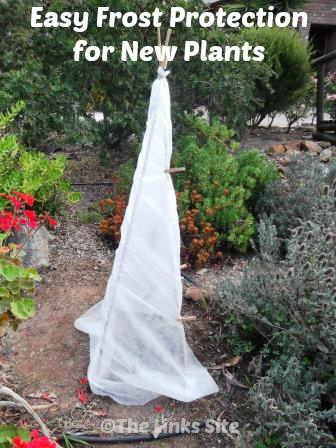
One plant that we are a bit worried about however is a waratah (Shady Lady Red) which was planted out in the garden during spring last year. We have never grown a waratah in our garden before now. It suffered a bit over the summer and we had to set up some shade cloth around it to stop the leaves getting burnt off.
With a bit of protection it survived the summer ok so we are keen to give it the best possible chance over winter to help it get properly established. Once it has been in the ground for couple of winters and is established in the garden it should be able to cope with the moderate frosts that we get in this area.
Lately we have had a couple of nights that have been under 5 °C but so far there haven’t been any frosts. With the weather steadily cooling off it is inevitable that we will soon have a frost. So recently we have been thinking about the type of frost protection that we should provide for our frost susceptible plants.
Earlier this year I purchased some frost protection cloth so that I could use it to cover any sensitive plants. But I wasn’t sure of the best way to place it over the plants. Many online resources suggest draping it over the plant or making a frame. I wanted to secure my frost cloth but I did not want to spend lots of time making an elaborate frame!
Easy Frost Protection Frame
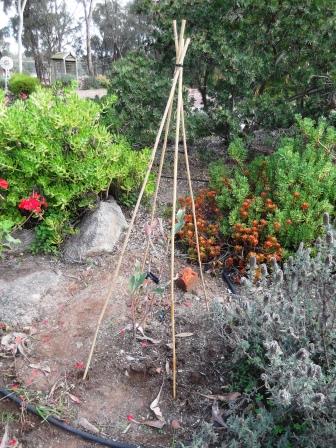
I used canes that were 120cms tall, which allowed for them to be pushed firmly into the ground while still leaving clearance over the plant. I was not able to get my garden string to hold them together firmly enough so I gathered them up and fastened them together with a cable tie! I wasn’t sure if the cable tie would hold them together properly but it actually did a great job.
Now when there is a frost I can drape a piece of frost protection cloth around the teepee and protect the plant. During my test runs I used clothes pegs to hold the frost cloth around the bamboo canes. I also tied the cloth at the top just under the cable tie with garden string. This will ensure that the plant is covered at the top.
It will be easy enough to remove the pegs and string in the morning once the frost danger is over.
While searching online I found a few general tips for minimising the effect of frost on your plants.
Frost Protection: General Tips
- keep plants well watered as this will help them to cope with frosts
- use cloth rather than plastic when covering plants
- have the cloth draped open to the ground not wrapped around the trunk of the plant/tree
- don’t let the cloth touch the plant if possible
- take the cloth off once the temperature begins to rise the next day
- move sensitive potted plants to a sheltered position
- choose appropriate plants for your area/climate
- if your plant is damaged by frost don’t prune off the damaged area until the spring
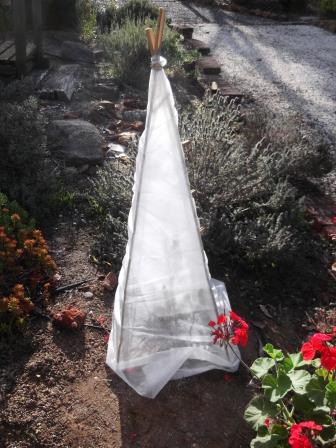
Royal Horticultural Society website: Frost damage
University of Arizona, Cooperative Extension, College of Agriculture: FROST PROTECTION (PDF)
Burke’s Backyard website: Formation of Frost
While I used bamboo canes to make my teepee frame, you could also make do with strong branches or twigs from the garden. We have lots of branches that fall from our gum trees so if I did not have access to bamboo I would definitely use these.
I picked up a 20m roll of frost protection cloth from the hardware store for $20 but you could use an old sheet to cover your plant instead.
Do you have any tips for protecting plants from frost?
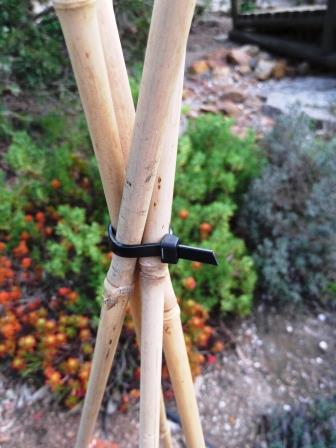
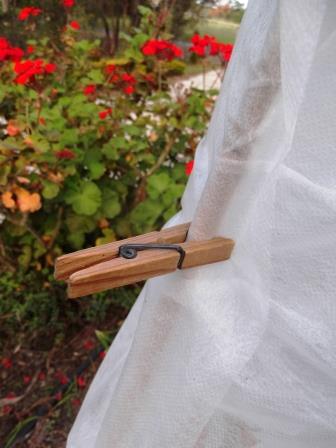




Leave a Reply